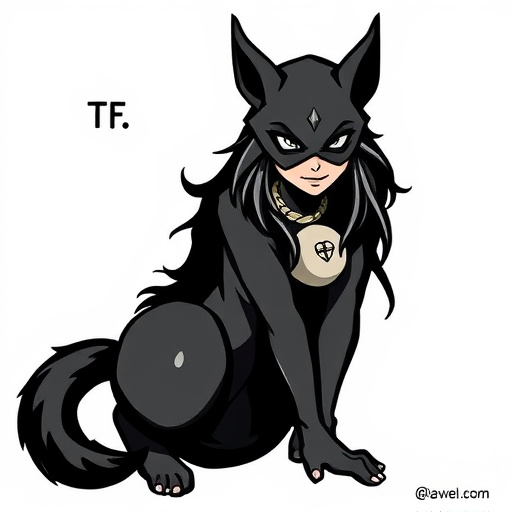Direct-to-Film Transfers (DTF) revolutionize analog media digitization, offering high-quality digital formats for films and video tapes. The process involves frame-by-frame scanning, processing, and encoding to ensure clarity and color accuracy. Essential preparation includes workspace hygiene, suitable materials, and surface selection for optimal ink adhesion. Meticulous steps start with source material preparation and end with curing and maintenance for long-lasting durability. Avoiding debris, adhering to exposure times, and using quality equipment prevent common quality issues in DTF transfers.
“Direct-to-film transfers (DTF) offer a revolutionary way to enhance visuals, from vintage photos to modern art. This article serves as your comprehensive guide to mastering the DTF process. We’ll explore the fundamentals of DTF, from its brief overview to essential equipment and surface selection for optimal results. Learn detailed application steps, common mistakes to avoid, and post-application curing techniques. By following these guidelines, you’ll achieve exceptional DTF outcomes.”
- Understanding Direct-to-Film Transfers (DTF): A Brief Overview
- Preparations Before Application: Essential Equipment and Materials
- Surface Selection: Choosing the Right Substrate for Optimal Results
- Technique and Application Steps: A Detailed Walkthrough
- Common Mistakes to Avoid During the Transfer Process
- Post-Application Curing and Maintenance Procedures
Understanding Direct-to-Film Transfers (DTF): A Brief Overview

Direct-to-Film Transfers (DTF) is a cutting-edge process that allows for the digital conversion of analog media, such as film and video tapes, into a high-quality digital format. This technology has revolutionized the way we preserve and share our cinematic heritage, offering a straightforward and efficient method to digitize old recordings. With DTF, enthusiasts and professionals can easily transform their beloved reels into modern digital files, ensuring longevity and accessibility for future generations.
The process involves scanning the original film frame by frame using specialized equipment, capturing every detail and texture. This digital representation is then processed and encoded, often with advanced compression techniques, to strike a balance between file size and visual quality. DTF offers a range of benefits, including improved picture clarity, enhanced color accuracy, and the ability to restore damaged or faded films, making it an indispensable tool for archivists, filmmakers, and anyone passionate about preserving cinematic history.
Preparations Before Application: Essential Equipment and Materials

Before diving into the application process, ensuring you have the right equipment and materials is paramount for achieving optimal results with direct-to-film (DTF) transfers. This includes a clean, well-lit workspace, high-quality transparent film suitable for your intended use, and precise cutting tools like a sharp blade or professional cutter. Additionally, you’ll need a source image or artwork that meets specific resolution requirements to guarantee crisp and clear reproduction on the final transfer.
Further essentials include a stable frame or backing for the film during application, typically in the form of a flat surface or roll, along with adhesive or bonding agents designed for DTF applications. Having a supply of cleaning solutions and soft cloths handy is also beneficial for maintaining precision and hygiene as you prepare and apply the transfer.
Surface Selection: Choosing the Right Substrate for Optimal Results

When it comes to direct-to-film (DTF) transfers, surface selection is a critical step that can significantly impact the outcome. The ideal substrate for DTF should offer a smooth, clean, and non-porous surface to ensure optimal adhesion of the ink or emulsion. This prevents any unwanted bleeding or seeping under the film, ensuring sharp and vibrant colors in the final transfer. Common choices include high-quality synthetic papers or specialized transfer films designed for photo-based applications.
Factors like surface roughness, moisture content, and chemical composition should be considered to match the substrate with the specific requirements of your DTF process. For instance, a more robust material might be suitable for applications that involve handling or exposure to external elements, while a softer option could provide better results for intricate details and fine lines. Ultimately, choosing the right surface enhances the clarity and durability of the transferred image, making it a crucial aspect of achieving professional-grade DTF outcomes.
Technique and Application Steps: A Detailed Walkthrough

Direct-to-film (DTF) transfers involve a meticulous process that demands precision and an understanding of both traditional and modern printing techniques. To achieve optimal results, start by preparing high-quality source materials—whether it’s a photograph or painting—ensuring they’re cleaned, stabilized, and any necessary repairs made. The next step is to choose the appropriate film stock, considering factors like resolution, color specifications, and desired final print size.
Once the material is ready, the transfer process begins with careful exposure of the source image onto the chosen film. This can be done using specialized equipment, such as a vacuum frame or a high-powered laser, ensuring even and accurate imaging. After exposure, develop the film according to manufacturer guidelines. Following development, the film is prepared for printing, often requiring additional treatments like hardening or coating to ensure longevity and quality of the final print.
Common Mistakes to Avoid During the Transfer Process

Direct-to-film (DTF) transfers, while offering numerous benefits, can be susceptible to certain common mistakes that may compromise the final product’s quality. One of the primary errors is improper preparation of the original film. It’s crucial to clean and ensure the film is free from debris, moisture, or any remnants that could hinder the transfer process. Neglecting this step often results in blurry or distorted images on the new medium.
Another mistake to avoid is exceeding recommended exposure times during the transfer. Over-exposure can lead to excessive brightness, loss of detail, and even burning of certain areas, compromising the original colors and contrast. Always adhere to the manufacturer’s guidelines for optimal exposure settings to maintain the film’s integrity. Additionally, using low-quality equipment or cables can introduce noise and artifacts into the signal, impacting the DTF transfer’s overall clarity and sharpness.
Post-Application Curing and Maintenance Procedures

After successfully applying a direct-to-film (DTF) transfer, proper curing and maintenance are essential to ensure long-lasting results. The curing process involves allowing the transferred film to set and bond with the substrate, which typically requires time and specific environmental conditions. This step is crucial as it enhances the durability and overall quality of the final product. During curing, the adhesives used in DTF transfers undergo a chemical reaction, strengthening their hold on the surface.
Regular maintenance includes keeping the transferred area clean and free from contaminants. This involves periodic cleaning with suitable solvents or specialty cleaners designed for DTF applications. Additionally, inspecting the transfer regularly for any signs of wear, peeling, or damage is vital. Quick action to address any issues can prevent further complications and maintain the integrity of the DTF application.














